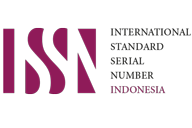APLIKASI STARTER YOGHURT YANG RESISTEN TERHADAP RESIDU ANTIBIOTIKA PENICILLIN
Abstract
Abstract
The presence of antibiotic residues in milk addition dangerous to humans, also cause a failure in the process of making yogurt. Through modifications to the standard procedure of making yogurt successful fermentation and eliminate residual content of antibiotics in milk but according Yulistiani and Raharjo (2006), the total content of lactic acid bacteria was still low at 104-105 CFU / ml. The research aims to: 1). Produce the yogurt starter was resistant to penicillin antibiotic residue levels in milk; 2). Assessing the use of starter concentration (which was resistant to the antibiotic penicillin residual content) and determine the concentration of the best starter for applications in the manufacture of yoghurt from milk beresidu antibiotics penicillin and 3). Produce yogurt from milk penicillin antibiotics in accordance with the quality standards of the Food Drug Administration (FDA), total lactic acid bacteria when consumed yogurt must contain a minimum of 107 CFU / ml. The study was conducted in 2 phases of the study: 1) Phase I is an adaptation to the dairy yogurt starter beresidu penicillin 6.0 IU / ml, 8.0 IU / ml and 10.0 IU / ml, respectively performed 2 times and 2) Phase II was an application for the manufacture of yoghurt starter yogurt from milk beresidu penicillin. The experimental design used was a completely randomized design (CRD), a pattern with 2 factors and 2 replications. The first factor is the concentration of starter (5.0%, 7.5%, 10.0%, 12.5% v/v) and the second factor was the residue levels of penicillin (6.0 IU / ml and 10.0 IU / ml ). The results showed that the production of yogurt starter was resistant to penicillin antibiotics in milk can be done by means of the adaptation process at several levels of starter yogurt gradually penicillin antibiotic. Application concentration of starter yogurt (which wais resistant to the antibiotic penicillin) by 5.0% -12.5% penicillin antibiotics in milk beresidu 6.0 IU / ml and 10.0 IU / ml can produce yogurt with total lactic acid bacteria (9.371 log CFU / ml - 9.528 log CFU / ml). Concentration starter yogurt (which is resistant to the antibiotic penicillin) significantly affect the total lactic acid bacteria, total acid, pH and soluble protein content. Penicillin Residues 10.0 IU / ml and a concentration of 5.0% starter was the best treatment for application in the manufacture of yoghurt from milk beresidu penicillin antibiotic.
Keywords: Yogurt Starter, residues Antibiotics, Penicillin, Milk Cow
Abstrak
Residu antibiotika pada susu selain berbahaya bagi manusia, juga menyebabkan kegagalan pada proses pembuatan yoghurt. Melalui modifikasi terhadap prosedur standard pembuatan yoghurt berhasil dilakukan fermentasi dan menghilangkan kandungan residu antibiotika pada susu tetapi menurut Yulistiani dan Raharjo (2006), kandungan total bakteri asam laktat masih rendah yaitu 104 – 105 CFU/ml. Penelitian bertujuan untuk : 1). Menghasilkan starter yoghurt yang resisten terhadap kadar residu antibiotika Penicillin pada susu ; 2). Mengkaji penggunaan konsentrasi starter (yang resisten terhadap kandungan residu antibiotika Penicillin) dan menentukan konsentrasi starter terbaik untuk aplikasi pada pembuatan yoghurt dari susu beresidu antibiotika Penicillin dan 3). Menghasilkan yoghurt dari susu beresidu antibiotika Penicillin dengan kualitas sesuai standard Food Drug Administration (FDA), total bakteri asam laktat yoghurt saat dikonsumsi minimal harus mengandung 107 CFU/ml. Penelitian dilakukan dalam 2 tahapan penelitian : 1) Tahap I adalah adaptasi starter yoghurt pada susu beresidu Penicillin 6,0 IU/ml, 8,0 IU/ml dan 10,0 IU/ml masing-masing dilakukan 2 kali dan 2) Tahap II adalah aplikasi starter yoghurt untuk pembuatan yoghurt dari susu beresidu Penicillin. Rancangan percobaan yang digunakan adalah Rancangan Acak Lengkap (RAL), pola faktorial dengan 2 faktor dan 2 kali ulangan. Faktor I adalah konsentrasi starter (5,0%, 7,5%, 10,0%, 12,5% v/v) dan Faktor II adalah kadar residu Penicillin ( 6,0 IU/ml dan 10,0 IU/ml). Hasil penelitian menunjukkan bahwa Produksi starter yoghurt yang resisten terhadap antibiotika Penicillin pada susu dapat dilakukan dengan cara proses adaptasi starter yoghurt pada beberapa kadar antibiotika Penicillin secara bertahap. Aplikasi konsentrasi starter yoghurt (yang resisten terhadap antibiotika Penicillin) sebesar 5,0%-12,5% pada susu beresidu antibiotika Penicillin 6,0 IU/ml dan 10,0 IU/ml dapat menghasilkan yoghurt dengan total bakteri asam laktat (9,371 Log CFU/ml – 9,528 Log CFU/ml). Konsentrasi starter yoghurt (yang resisten terhadap antibiotika Penicillin) berpengaruh nyata terhadap total bakteri asam laktat, total asam, pH dan kadar protein terlarut. Residu Penicillin 10,0 IU/ml dan konsentrasi starter 5,0% merupakan perlakuan terbaik untuk aplikasi pada pembuatan yoghurt dari susu beresidu antibiotika Penicillin.
Kata Kunci : Starter Yoghurt, Residu Antibiotika, Penicillin, Susu Sapi
Pusat Publikasi | Teknologi Pangan | Fakultas Teknik (Gedung Giri Reka ) | Universitas Pembangunan Nasional "Veteran" Jawa Timur, Indonesia
Jln. Raya Rungkut Madya, Gunung Anyar Surabaya, 60294 Email : jtp@upnjatim.ac.id














